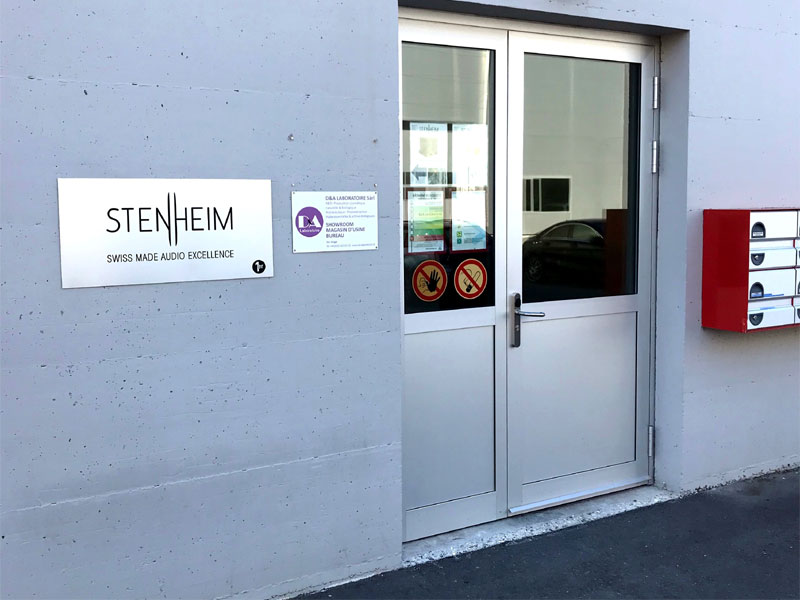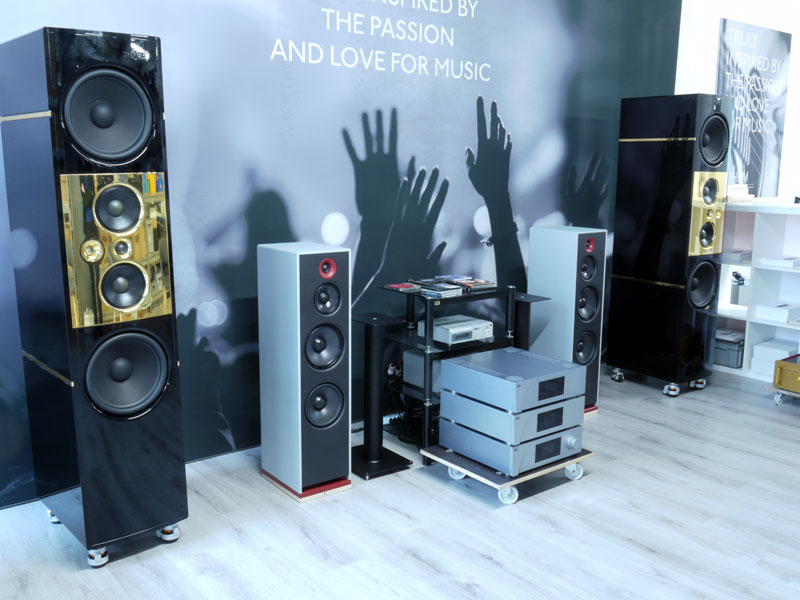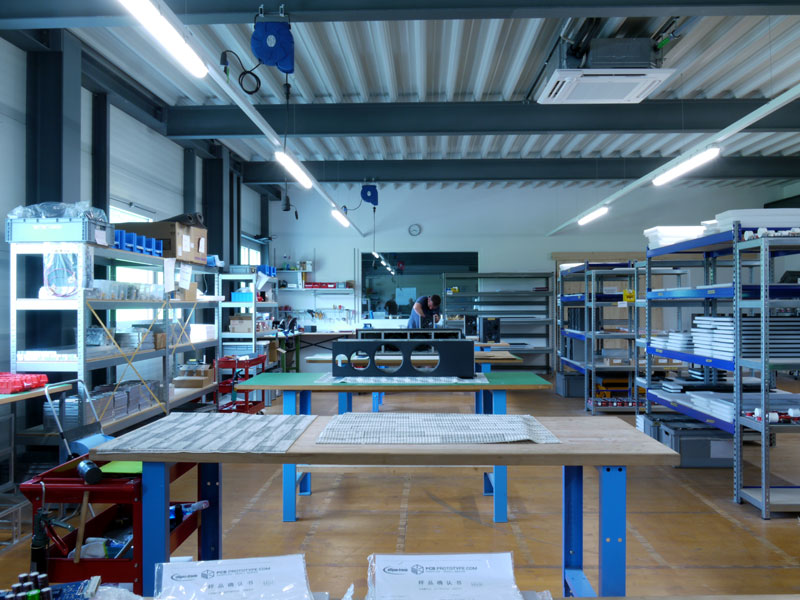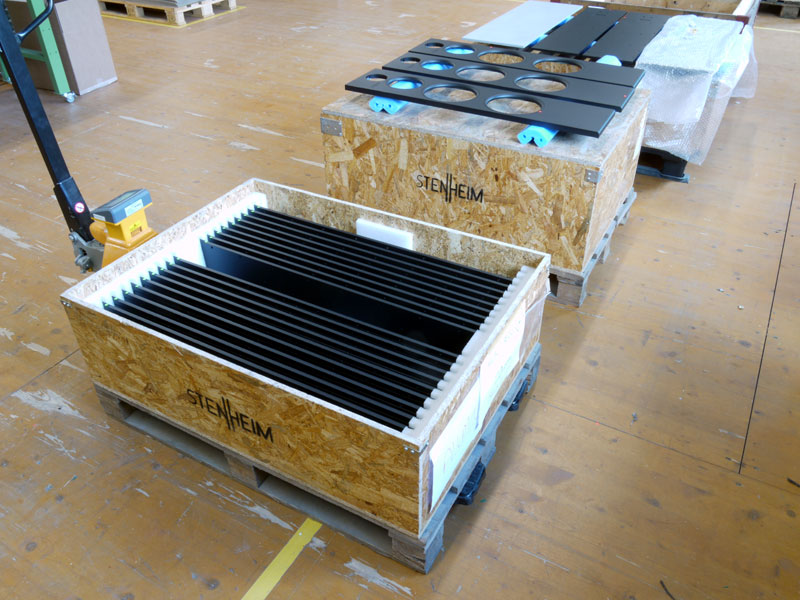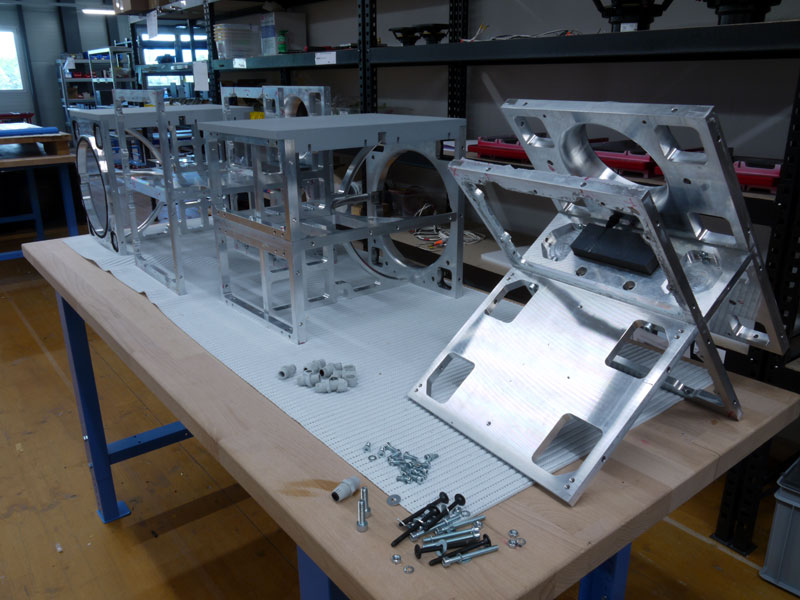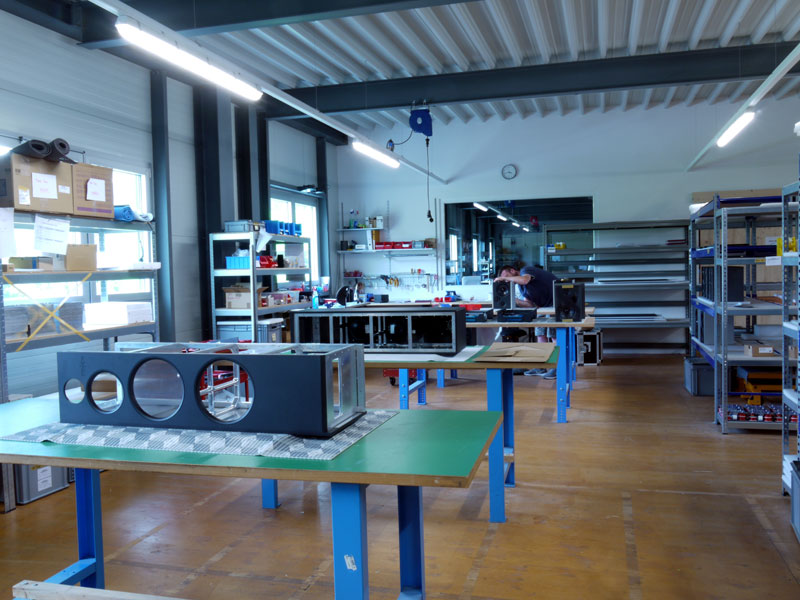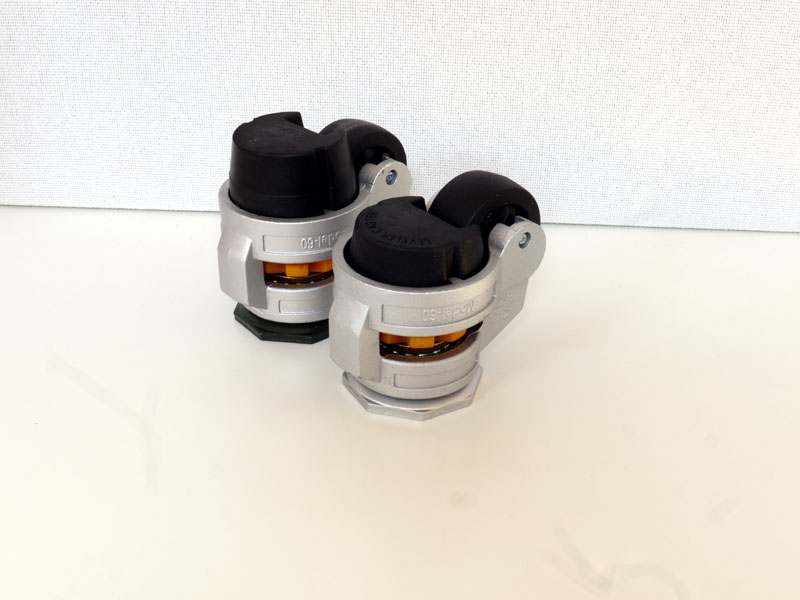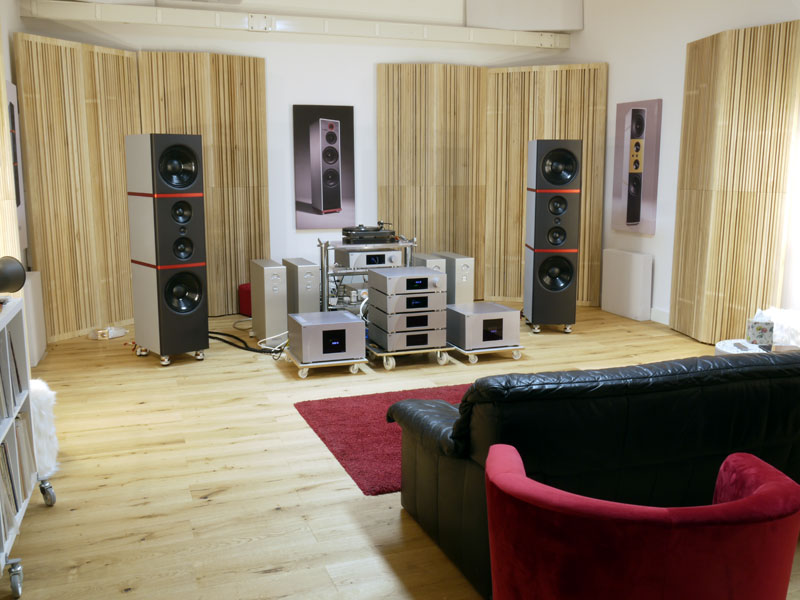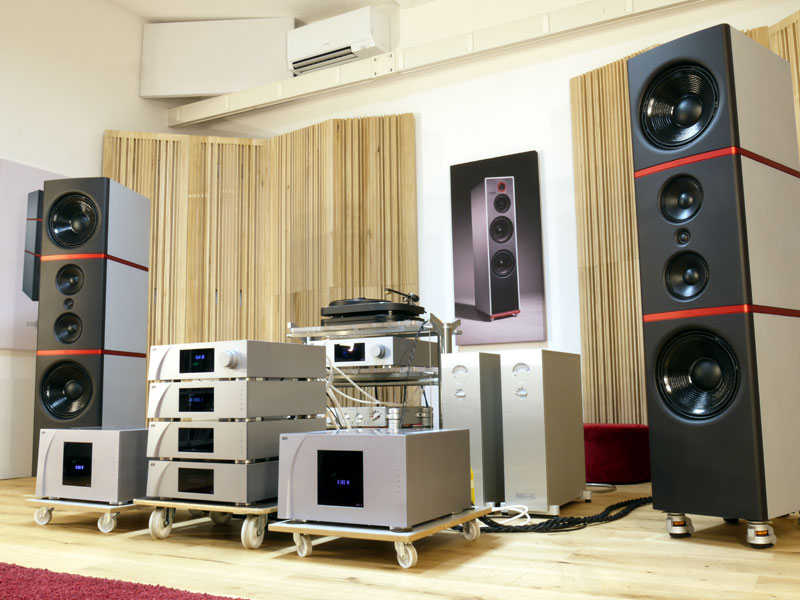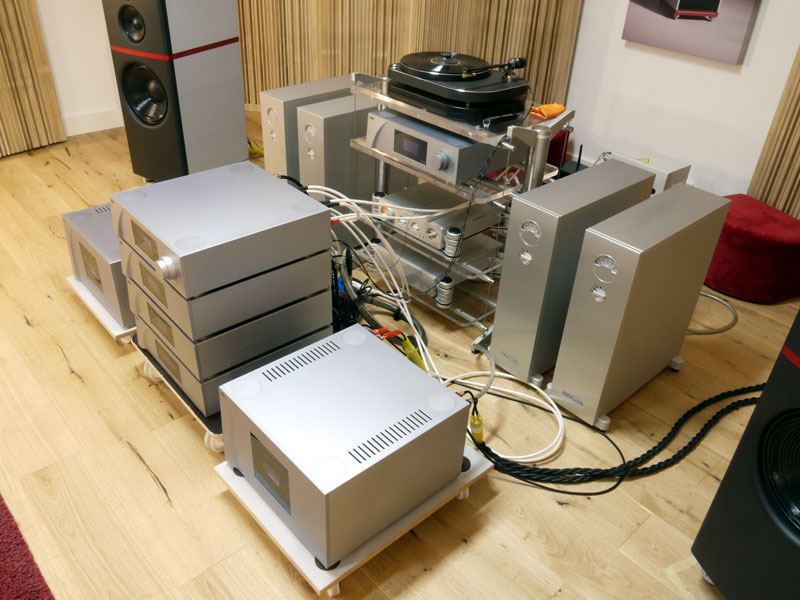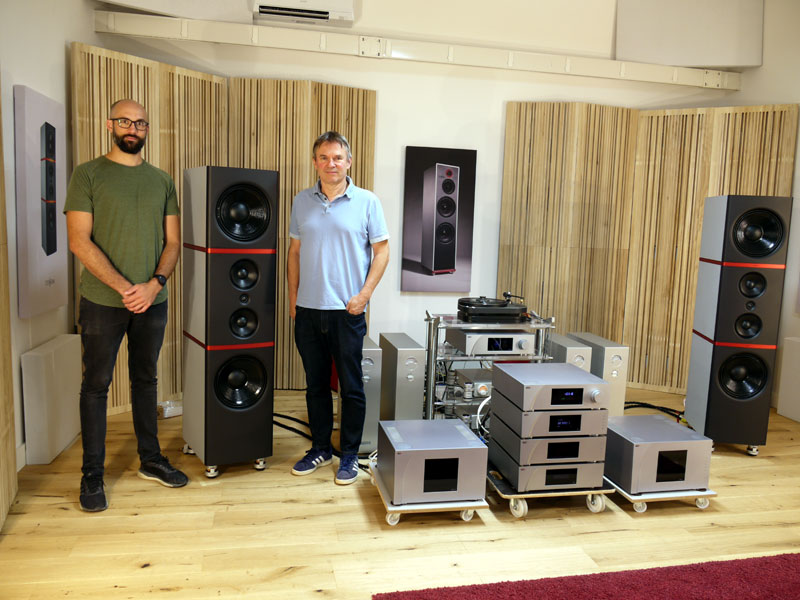Moving Up: Revisiting Stenheim
he Swiss landscape, with its chocolate-box views and stunning mountain vistas, basks gently in the late-summer sun. The serried ranks of vines, thin ribbons of green, sit atop stone buttressed terracing, clamber up the almost impossibly vertiginous sides of the deeply carved valley. Swiss wines may not have the international reputation of those from Burgundy or the Northern Rhone (the French one, that is), wine regions that sit just the other side of Lake Geneva and the Jura mountains, but they’re good -- and they’re getting better. From the sharp edges of the flanking ridges, ski stations look down, modern castles for the rich and famous. But, as arresting as it is, I’m not here to enjoy the view, sample the wine or, in summer, indulge in winter sports. Instead I’m here to visit Stenheim, a chance for a first listen to their new Reference Ultime Two loudspeakers ($150,000 per pair) but also to see their new offices and production facility. I first visited Stenheim in Vetroz, in the Valais, in 2017. Back then the company was a relative newcomer but making a splash. In a little under five years, a lot has changed, not least the fact that they’ve twice moved to larger premises, first to an interim facility and then a year later to their current home. It’s quite a contrast to my original experience. Originally, the speakers were designed and built in what was once a family home with a wood shop attached, The white chalet-style house, with its steep, tiled roof and red shutters, couldn’t have been more Swiss if it tried. These days, things are a lot less picturesque -- but an awful lot more business-like and practical.
Visit and you’ll still find Stenheim situated halfway between the ski resorts of Crans-Montana and Verbier, the climb to the latter being the road where Alberto Contador buried Lance Armstrong’s comeback, that humiliation marking the appearance of the first cracks in the Texan’s façade of sporting and celebrity invincibility (and yes, I did bring my bike). But the site I’ve come to visit is located behind an anonymous door in the long side of an equally anonymous, modern three-floor building, typical of the type you’ll find in any European Zone Industrielle. The first two floors are occupied by warehousing for one of the region’s most respected winemakers and a natural cosmetics company. But climb to the top floor and you’ll be met on the landing by a life-sized image of the Alumine Five ($64,900 per pair), Stenheim’s three-way floorstander. It’s the first real indication that you might actually be in the right place.
Step through the door and suddenly everything changes, the painted concrete walls and floor giving way to a smart, modern interior, all-white partitioning with large glass windows and an open-plan airiness, despite the various offices and the display area. This is the front entrance to an 8000-square-foot facility that accommodates the beating heart of the Stenheim operation, from design and development through production and packaging, sales and admin through listening and dispatch. From the front-office area you enter a large open space, subdivided with racking into three separate sections, each devoted to producing either crossovers, the Alumine line or the Reference Ultime series. A large sliding door leads to the bulk-storage area, where components and cabinet parts are received and stock is stored, prototype speakers are tested and production speakers burnt in. A massive goods lift allows the heavy crates loaded with finished aluminum panels to arrive and the cartons, crates and flight cases containing finished speakers to leave. There’s an easy air of uncluttered efficiency and calm activity about the place, although that might be because around half the company’s twelve employees were on holiday.
Walking through the floor, it’s easy to trace the production process. Like many Swiss manufacturers, Stenheim relies on the atelier system, a highly structured network of specialist subcontractors who produce high-quality parts for assemblers. It’s the basis of the entire Swiss watch industry, precision production of legendary quality and consistency. Machining parts for something as big as a loudspeaker should be child’s play -- although here, too, precision counts. As my own past and painful experience with another company’s products shows, even the slightest misalignment when it comes to fixings, threading, the holes for bolts or the counter-bores to take their heads and you are into a world of hurt, with binding bolts locked solid, halfway home, panels where some bolts fit and some bolts don’t. When it comes to changing the tweeter in a $200,000 loudspeaker, I’m not sure that a sledgehammer (yup, ma, a full-on, post-sinking sledgehammer) should be part of the toolkit. Having opened a couple of Stenheim speakers myself, I know that not only do they come apart, but they also go back together.
Cabinet panels and internal parts arrive at Stenheim neatly arrayed by foam separators inside their wooden crates. Each panel is immaculately machined and finished, baffles complete with beautifully machined radii and hidden fixings for the drivers, internal braces with rounded profiles. Even so, as each panel or part is picked to create a "cabinet set," it is exhaustively checked, for the quality of the finish and the accuracy of the machining. Once passed, the panels are transferred to racking alongside the padded assembly tables -- tables that are padded even though the panels are finished in what amounts to an incredibly tough, metal-flake powder coat that should preserve the speaker’s appearance for decades to come. Here they are mated with drivers and crossovers, tested and assembled in their own dedicated space.
Each set of speakers is assembled as a matching pair, separate tables and jigs dedicated to each model. This isn’t a production line as such -- more a case of artisan construction, with a single person (or pair of people, in the case of the larger models) responsible for each pair of speakers. With the pre-vacation rush completed -- evidenced by the stacks of product awaiting dispatch -- the production area has been cleared for the next series of orders, with only a couple of sets of urgent Alumine Twos ($12,950 per pair) and Threes ($34,750 per pair) nearing completion. Even so, watching assembly, it’s obvious how precisely and effortlessly the cabinets go together.
Likewise, in the Reference Ultime assembly area, the racks and tables are empty, awaiting the arrival of metalwork for the second production batch of Ultime Twos -- delayed by the worldwide shortage of raw aluminum. Prototype parts occupy one of the tables, where they have been mapped and measured to check the CNC coordinates and dimensions after the first production run. Even so, the prototype baffles and internal bracing are an impressive mix of sculptured elegance and structural substance. It’s no surprise that even Stenheim’s smaller speakers are grunt-inducingly heavy to move.
Which makes my next discovery all the more welcome. There are plenty of speakers that arrive on wheels, but Stenheim has finally found what it considers to be the ideal caster, a combination wheel-and-pad arrangement, in which the caster itself also includes a solid rubber pad that can be screwed down (using a knurled wheel) to locate the speaker in place. That makes moving finished speakers into the test, burn-in and packing area considerably easier -- but that’s only half the story. Plans are afoot to not only replace the rubber pad with a metal block, but to add spacers to the large-diameter cones on the Ultime-series speakers to match their height to that of the caster assembly. That means that not only will initial positioning be considerably easier, but installers will also have a far wider range for speaker height and rake angle, both serious considerations for setup.
With the impressively spacious new premises given the once over, it was finally time to visit the most interesting space of all, Stenheim’s new listening room. Partitioned off from the main space, the room is around 18’ 6” by 27’ (5.6m x 8.15m) with the same high ceiling as the rest of the floor. That makes it a near-perfect fit for the Reference Ultime Two and just about big enough to accommodate the Ultime Three ($248,000 per system) -- although it would struggle with the four-cabinet Statement system ($645,000). The room is treated with a combination of VDM Sound acoustic panels (from Italy) and strategically placed absorption, while the floor consists of a 1.5”/4cm bed of sand overlaid by multiple layers of fiberboard and plywood. Although there is a single Stillpoints ESS rack, the room is awaiting the arrival of Franc Audio racks from Poland, while storage for software and all the tools and paraphernalia that are necessary in a working listening room is provided by the ubiquitous IKEA Kallax units. There’s comfortable seating for six, and currently you have the choice of a full suite of Nagra HD electronics or CH Precision 1 Series -- both set up to biamp the speakers.
Up close and personal, the Reference Ultime Two is as impressive as it is attractive. Although in dimensional terms it is only slightly shorter and a bit shallower than the Ultime Three, it succeeds in projecting a far less bulky visual presence, perhaps helped by the curved and heavily profiled baffle and horizontal red feature lines. This looks far more like a big Alumine Five than a small(er) Ultime Three. Interestingly, that’s also the way it sounds -- which is no bad thing. Driven by the familiar CH Precision electronics, the Ultime Two projected the same sense of musical energy and enthusiasm that makes the Alumine Five so enjoyable, but couples it to a greater sense of scale dimensionality and sheer substance. With Alina Ibragimova’s performance of the Shostakovich 1st Violin Concerto [Hyperion CDA68313], the drama, challenge, and incredible emotional intensity of the Passacaglia were palpable, the music holding me captivated despite the length and complexity of the passage, while the stylistic contrast with Batiashvili’s equally impressive performance was immediately apparent. That speaks volumes about the speaker’s seamless integration, easy dynamic response and the absence of an obvious sonic signature.
Switching to vinyl and cueing up Christina Pluhar and L’Arpeggiata (Music For a While [Erato 0190295 250843]), I found it is easy to forget the system entirely, marveling at Raquel Andueza’s astonishing vocal dexterity and control, while, once again, the difference in performance between the LP and CD issues was almost brutally apparent. It’s not that the speaker or the system dismantles recordings, but neither does it draw a veil over their limitations. Does that intrude on enjoyment? Not if the results from the Rostropovich/Dvorak Cello Concerto on LP [Deutsche Grammophon Gesellschaft SLPM 139044] or the Duke Ellington/Ray Brown album This One’s For Blanton [Analogue Productions CAPJ 015] are anything to go by. Neither is a great recording, but both are great performances -- something this system made abundantly clear.
Dario Biner (left) and Jean-Pascal Panchard, Stenheim's CTO and CEO, respectively. What’s also clear is that Stenheim is going from
strength to strength. It’s clear in the impressive growth embodied in the
company’s new premises. It’s clear in the performance of their latest speakers.
Although their products have always been worth seeking out, the Reference Ultime Two not
only closes the gaping crevasse between the top of the Alumine line and the Ultime series,
it moves Stenheim into a new and about-to-become heavily contested market sector, butting
heads directly with the likes of the Wilson Audio Alexx V and neatly bisecting
Göbel’s Divin models. As always, final judgment will need to wait for a full review,
but on this showing, Stenheim and the Ultime Two are definitely well equipped to compete. |

